 Early in 1836, nearly two hundred American men lost their lives defending the Alamo in San Antonio, Texas, over the course of a thirteen-day siege. While this event is largely viewed through the lens of Texas and southern American history, several men from New England were involved in the defense and indispensable in the battle. The following men were New Englanders who played a key role in the defense of the Alamo: Continue reading Remembering the Alamo
Early in 1836, nearly two hundred American men lost their lives defending the Alamo in San Antonio, Texas, over the course of a thirteen-day siege. While this event is largely viewed through the lens of Texas and southern American history, several men from New England were involved in the defense and indispensable in the battle. The following men were New Englanders who played a key role in the defense of the Alamo: Continue reading Remembering the Alamo
Tag Archives: Critical Analysis
Turning green
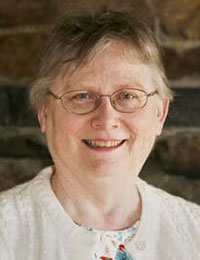 I have been diddling with the sketch for Samuel Green of Boston for over a year and I’m still confused. Samuel2 Green, son of Bartholomew1 Green, was of the famous family of printers who operated the only printing press in the English colonies until 1665, and over Samuel’s fifty-year career his press printed 190 imprints, including the John Eliot “Indian” Bible. Samuel became the progenitor of a dynasty of printers that lasted 190 years and six generations. One would think the records for this family would be plentiful and accurate, right?
I have been diddling with the sketch for Samuel Green of Boston for over a year and I’m still confused. Samuel2 Green, son of Bartholomew1 Green, was of the famous family of printers who operated the only printing press in the English colonies until 1665, and over Samuel’s fifty-year career his press printed 190 imprints, including the John Eliot “Indian” Bible. Samuel became the progenitor of a dynasty of printers that lasted 190 years and six generations. One would think the records for this family would be plentiful and accurate, right?
Not so much. Continue reading Turning green
ICYMI: Researching famous people

[Editor’s note: This blog post originally appeared in Vita Brevis on 2 July 2015.]
Census records, passport applications, draft cards: many people are familiar with these resources because of their ability to tell us more about our own family history. However, they are often underutilized as a tool for understanding the lives of famous individuals. One notable celebrity of the early twentieth century who left quite a trail of records was George Herman “Babe” Ruth, perhaps the most well-known American baseball player of all time. Because of this, we are able to construct a biographical narrative of his experiences using records available to the public which were recorded during his lifetime. In this entry, we will discuss some of these records and precisely what they tell us about the life of Babe Ruth. Continue reading ICYMI: Researching famous people
Lost generations

One of the trends in my ancestry is the curious one whereby, when given the choice between staying in a locale or moving on, my nineteenth-century forebears often remained behind as other relatives ventured further west. One of the sadder family stories is covered in the 1999 book Intimate Frontiers: Sex, Gender, and Culture in Old California, by Albert L. Hurtado, and concerns my great-great-great-uncle John Henry Beeckman (1818–1850).
Uncle John was the eldest son of Henry Beeckman and Catherine McPhaedris Livingston, and the family was a prosperous one in the days before the Civil War. That they were socially acceptable to New Yorkers and Virginians alike is suggested by the fact that John H. Beeckman married Margaret Gardiner in 1848 at the Virginia plantation of the bride’s brother-in-law, former President John Tyler. Still, John Beeckman was a young man, fired up by the discovery of gold in California, and in 1849 he left bride and newborn son to travel west. Continue reading Lost generations
The stranger in my genes
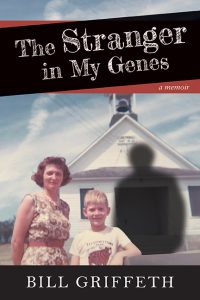 When I was writing my new book, The Stranger in My Genes – about the DNA test I took that shockingly suggested my father wasn’t really my father – I thought my story was unusual, if not unique. Boy, was I wrong.
When I was writing my new book, The Stranger in My Genes – about the DNA test I took that shockingly suggested my father wasn’t really my father – I thought my story was unusual, if not unique. Boy, was I wrong.
After the ebook version was released on August 23, I almost immediately heard from several friends who told me about people they knew with similar stories.
There was the one about the man who received a DNA testing kit for Christmas one year, and – long story short – discovered a daughter he didn’t know he had. Merry Christmas. Continue reading The stranger in my genes
ICYMI: A question of identity
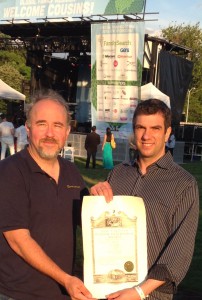
[Editor’s note: This blog post originally appeared in Vita Brevis on 29 June 2015.]
Over the years I have had the chance to discuss the subject of ethnicity (and identity) with avid genealogists and those who are not all that interested in the field of genealogy. Many people will quickly share with you what their ethnicity is, with answers varying from “American” to a varied mix of ethnic origins. This answer, as you can imagine, can vary greatly with the knowledge each person has as to what was passed down to them by their parents about their own heritage. What I have noticed in these discussions is the depth in which these generational levels of ethnic origin will differ. Continue reading ICYMI: A question of identity
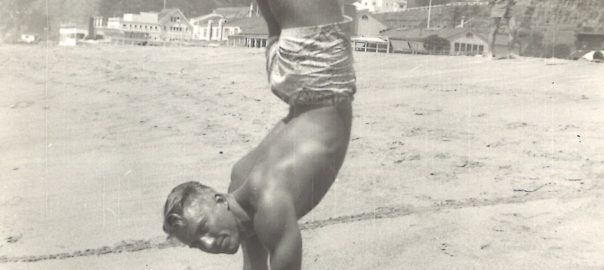
Friendly rivalries
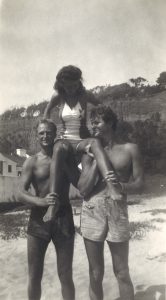
For starters, the (presumably female) scribe who wrote neatly on most of the prints dated them precisely: most are from 3 September 1944, with one or two from four days later. The focus of her interest is clear: Wayne Ehler, whose gymnastic endeavors she much admires. Two photos are marked in another hand, and perhaps this one is male, since he subtly denigrates Wayne and boasts of his own comparable accomplishments (not shown). Continue reading Friendly rivalries
Richard Brunton’s family registers
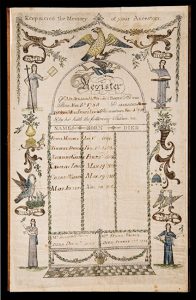
Over the centuries, families have kept their own records of their history – by writing it in family Bibles; by sewing it into samplers and other needlework; by having it engraved onto objects; and sometimes by writing it into preprinted family registers. NEHGS has launched a new database of family registers that have one thing in common: all were originally engraved by English-born Richard Brunton, who lived in New England in the years during and after the Revolution. Continue reading Richard Brunton’s family registers
‘Where was the music?’
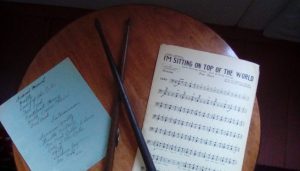 It may surprise you to read (or not, if you’re family) that I have squirrels in my closets. They nest in bins, and hide under papers, books, or textiles when I want to find one, or shout for attention when I don’t. But I like living indoors without wildlife, so these are not the red or gray, bushy-tailed squirrels, but the genealogical kind described by Meaghan E.H. Siekman in her essay “Chasing a Squirrel.” Continue reading ‘Where was the music?’
It may surprise you to read (or not, if you’re family) that I have squirrels in my closets. They nest in bins, and hide under papers, books, or textiles when I want to find one, or shout for attention when I don’t. But I like living indoors without wildlife, so these are not the red or gray, bushy-tailed squirrels, but the genealogical kind described by Meaghan E.H. Siekman in her essay “Chasing a Squirrel.” Continue reading ‘Where was the music?’
Memories of things unknown
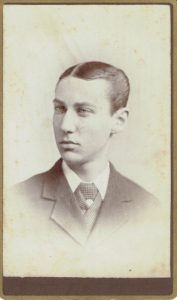
Many family history researchers are hard-pressed to find personal information, photographs, memorabilia, or heirlooms to treasure and preserve. I am not one of them, and yet I seem to have a remarkable supply of “memories of things unknown,” the scraps of someone’s attempt to memorialize a moment or a personality in a manner obvious to the author but obscure to later generations. I have stacks of unmarked photos of unnamed family members, locations, cattle, horses, barn cats, and especially Dalmatian dogs.
My great-grandfather Ambrose Church’s autograph book from his school days at the Oak Grove Seminary in Vassalboro, Maine – a girls’ school founded by the Society of Friends, but open as co-ed to local children – is a case in point. Continue reading Memories of things unknown